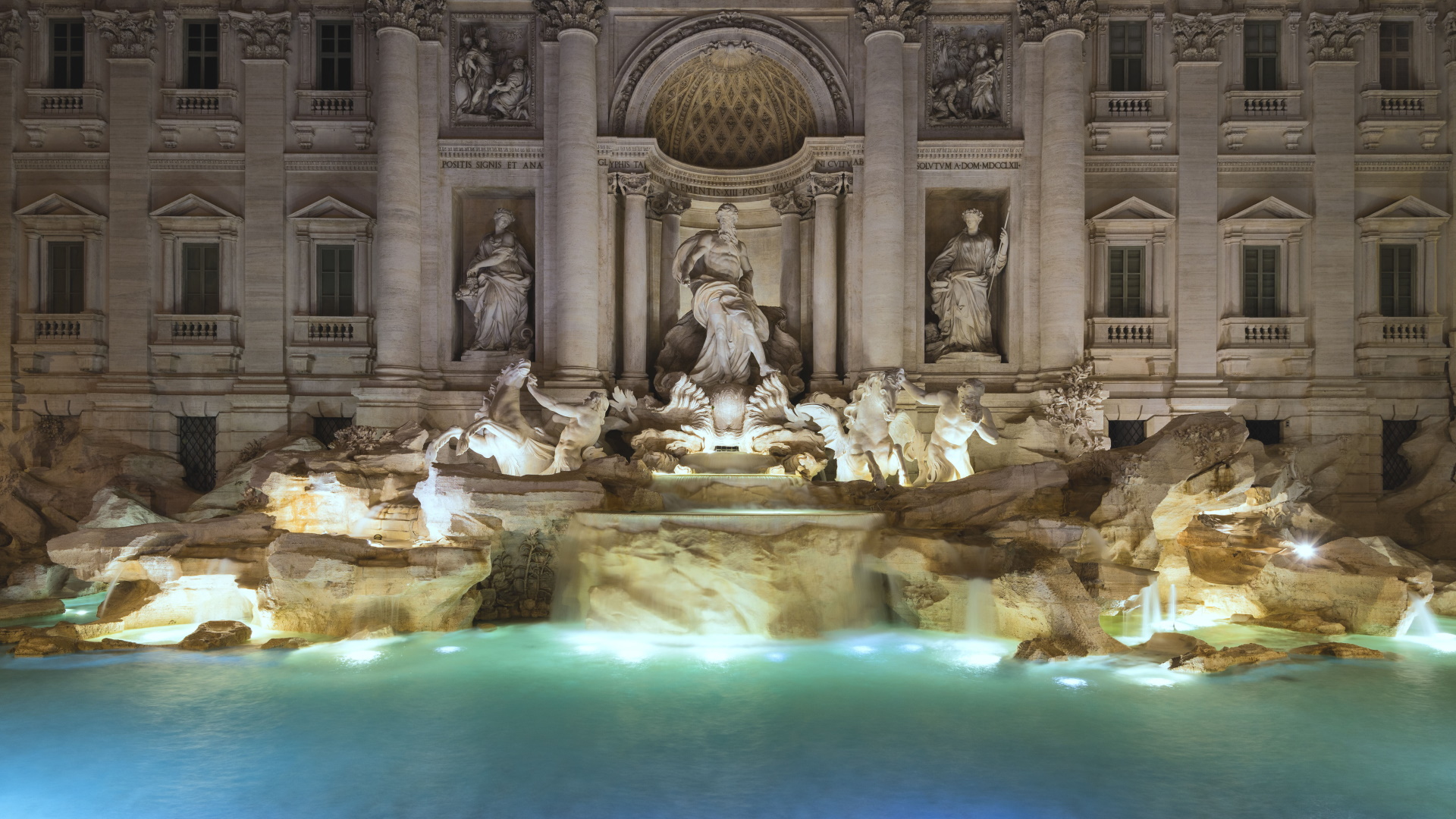During long, warm summer days it is hard not to dream about much-needed holidays. With that said I was reminded of my visit to Rome some time ago with crowds clamoring around fountains and spouts around the city. The most crowded and famous is the Trevi Fountain.
It is the largest fountain in Rome at 49 m (160 ft) wide and 26 m high (85 ft), it has also been called the most beautiful. Trevi comes from Tre Vie meaning three ways, referencing the location at the cross-section of three streets. The fountain is almost hidden among the narrow streets, and suddenly around the corner, the sound of rushing water can be heard and the roads open to the piazza.

The site of the fountain originated back in 19 BCE when it formed at the end of the Aqua Virgo aqueduct. The source was 21 km away at Salone Springs. Roman General Marcus Vipsanius Agrippa worked to provide people with access to quality public services and was responsible for the formation of these aqueducts. Water was the lifeblood of the city. The waters of the Aqua Virgo were considered the softest and most pristine. The name comes from the myth that it was a virgin maiden who showed the Romans the location of the spring.
There had always been a small fountain at the spring. Over the centuries, there were a variety of projects to make it grander. Pope Nicholas V commissioned Leon Battista Alberti to design a wall fountain with three spouts. In the 17th century, Pope Urban VIII asked Gian Lorenzo Bernini to develop new plans to replace Alberti’s fountain. However, a lack of funds scrapped the project.

It was not until the 18th century the Trevi Fountain we know today came to fruition. Under the initiation of Pope Clement XII (1730-40), a competition would determine who would design it. For various reasons, the first and second-place winners fell through. The job fell on the third-place winner, poet, and philosopher, Nicola Salvi. Salvi had no prior experience with architectural design. The project would take over 3 decades to complete and was fraught with difficulties and controversies from the beginning. It was a large undertaking with numerous artists and patrons involved adding to the complexities and delays. Both Clement XII and Salvi would pass away before the project was finished. In 1762, Giuseppe Pannini, who worked with Salvi headed the final stages and finished in 1762.
Holding over 300,000 liters of water, the sculptural composition pays homage to the water that was so precious to the Romans. At the center stands Oceanus, the Greek Titan god of the river Okeanos, by Pietro Bracci. He stands at over 4.8 m (16 ft). His chariot is pulled by two Tritons – one older and one younger. Their two horses reflect the changing nature of water. One horse is calm and the other more wild.

Behind Oceanus and encased in niches are female statues of Abundance and Health by Filippo della Valle. Both figures tied into the theme of water. Abundance holds a horn filled with fruits to symbolize plenty with a turn-over jug spilling water. Health is adorned by the laurel wreath, the plant sacred to Apollo, and a serpent coiling to her side to drink from a cup. At the time of the building of the fountain, the water was among the best tasting. Now it is no longer drinkable as it is recycled between several fountains in the city.

Above these two allegorical statues are two bas-reliefs depicting the Roman origins of the spring by Giovanni Battista Grossi and Andrea Bergondi. On the left, Marcus Agrippa is explaining his plan for the aqueduct. On the right is the depiction of the maiden who is said to have shown the source of the waters.

At the very top of the fountain are statues symbolizing the four seasons and the coat of arms of Clement XII. There is an inscription that translates:
Clemens XII Pontifex Maximus decorated the Virgin Aqueduct and committed it with abundance and salubrity to the cult in the Year of the Lord 1735, 6th year of his pontificate.
In 2013 a much-needed restoration and cleaning of the fountain were funded largely by the fashion house Fendi. It took almost two years and over 2 million Euros to finish. It is forbidden to enter or touch the water in any way and is subject to fines for any violation.

So ingrained in modern culture, the Fountain of Trevi has been featured in a number of movies. Frederico Fellini’s La Dolce Vita (1960) has the iconic scene of Marcello Mastroianni and Anita Ekberg in the fountain. And of course the famous throwing of coins from Three Coins in a Fountain (1954). The myth states if you throw one coin you will return to Rome, two coins you will fall in love with an attractive Italian, and three coins will guarantee marriage to that Italian. The throwing of coins is so popular that every year about a million Euros are collected from the fountain and donated to local causes.

